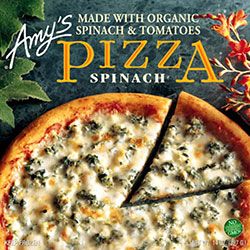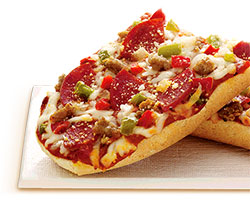In the wake of waves of publicity about health foods and so-called “real food” trends, frozen pizza may be suffering from a processed food stereotype, according to market research publisher Packaged Facts. The bottom line is that during 2010-14, the percentage of households in the United States eating frozen pizza dropped slightly, while the percentage consuming 10 or more pizzas per month dropped 15%.
The trend is particularly troubling to suppliers because it involves demographics that have been core users, such as consumers living in households with an income under $25,000 per year, married with children households with earning of less than $50,000, and Hispanics, according to the second edition of Pizza Market in the US: Foodservice and Retail.
But against the backdrop of what is said to be an improving economy, this is only half the story. Restaurant pizza chains offering the promise of higher quality products increasingly beckon, and pizza delivery and takeout segments provide very strong competition in the form of simplicity and convenience.
The good news is that, in the face of this double-sided attack, industry players are well on their way to addressing the problem. Packaged Facts’ analysis of the 30 highest-growth frozen pizza brands reveals that 12 are strongly associated with restaurant chains and/or restaurant quality. Meanwhile, one-third clearly and predominantly associate themselves with health and wellness.
 “The reality that these themes are finding a growing audience suggests that frozen pizza can gain traction by fighting fire with fire,” said David Sprinkle, Packaged Facts’ research director. “Frozen pizza manufacturers can combat attrition through healthier product positioning. Marketers such as Annie’s Inc. and Amy’s challenge the notion that frozen pizza has to be heavily processed.”
“The reality that these themes are finding a growing audience suggests that frozen pizza can gain traction by fighting fire with fire,” said David Sprinkle, Packaged Facts’ research director. “Frozen pizza manufacturers can combat attrition through healthier product positioning. Marketers such as Annie’s Inc. and Amy’s challenge the notion that frozen pizza has to be heavily processed.”
Additional findings from the report reveal that consumers who say they have been eating more frozen pizza over the past few years are also more likely to be eating ready-to-eat prepared food and snacking instead of having a full meal. This reinforces the notion that frozen pizza caters to demographics that value convenience.
 The convenience of frozen pizza explains at least in part the continued loyalty younger adults have for such products, which in general is good news for the pizza industry. Indeed, younger consumers remain a key demographic for frozen pizza – due perhaps to improvements in nutrition of frozen pizza; the ease with which it can be prepared, served and shared; as well as the fact that younger shoppers enter stores with fewer preconceived notions than preceding generations that grew up on highly processed frozen meals.
The convenience of frozen pizza explains at least in part the continued loyalty younger adults have for such products, which in general is good news for the pizza industry. Indeed, younger consumers remain a key demographic for frozen pizza – due perhaps to improvements in nutrition of frozen pizza; the ease with which it can be prepared, served and shared; as well as the fact that younger shoppers enter stores with fewer preconceived notions than preceding generations that grew up on highly processed frozen meals.
Moreover, frozen pizza is a good value when compared to take-and-bake or restaurant pizza. Trader Joe’s, Kashi and Lean Cuisine frozen pizzas feature interesting ingredient profiles that may keep younger consumers engaged while at the same time boosting appeal among the “urban” pizza consumer.
 About Packaged Facts
About Packaged Facts
Packaged Facts, a division of MarketResearch.com based in Rockville, Maryland, USA, gathers market intelligence on a wide range of consumer market topics, including demographics and shopper insights, consumer goods, retailing and packaged goods.





